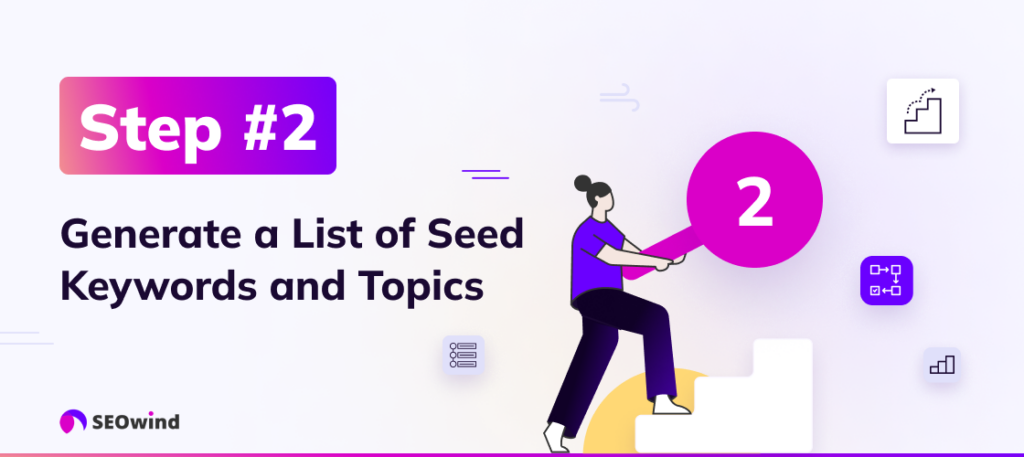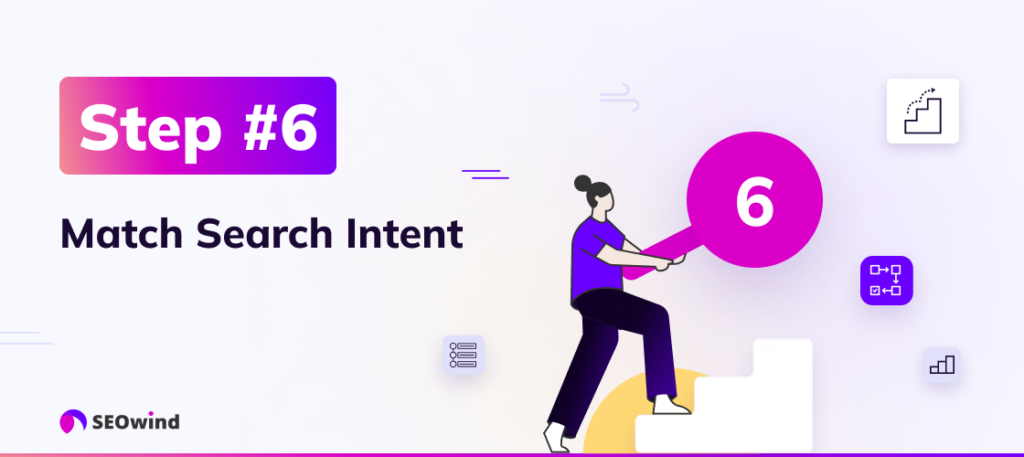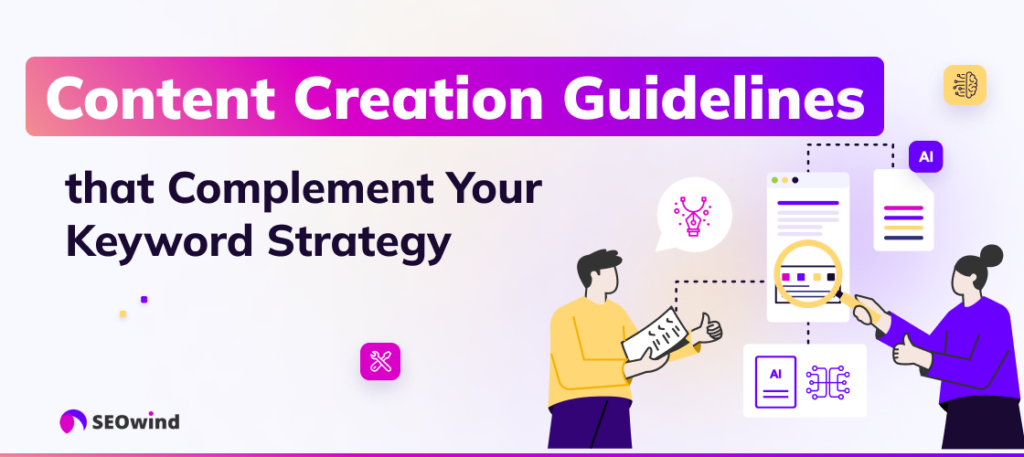Are you tired of pouring your heart and soul into creating content that barely gets noticed? Or perhaps you wonder why your website isn’t attracting the traffic and leads you desire. The secret to online success is mastering keyword research. In this guide, we’ll take you on a step-by-step journey to determine the best keywords for your SEO strategy, empowering you to skyrocket your website’s visibility and drive meaningful results.
Understand the Importance of Keyword Research

Before diving into the nitty-gritty of keyword research, it’s crucial to grasp why this process is so vital to your SEO success. Keyword research forms the foundation of your entire SEO strategy, influencing everything from content creation to marketing activity. By understanding the significance of keyword research, you’ll be better equipped to prioritize this essential task and allocate the necessary resources to excel online.
Relevant Traffic and Leads
One of the primary reasons keyword research is so important is that it helps attract relevant traffic and leads to your website. By identifying the keywords your target audience is actively searching for, you can create content that addresses their needs and interests. This targeted approach ensures that the visitors landing on your site are more likely to engage with your content, convert into leads, and ultimately become loyal customers.
Content Strategy and Marketing Trends
Keyword research also plays a pivotal role in shaping your content strategy and keeping you attuned to the latest marketing trends. By analyzing the keywords your competitors are targeting and monitoring the search volumes and trends associated with specific keywords, you can gain valuable insight into the topics and themes that are resonating with your audience. This knowledge allows you to craft a content strategy that aligns with your business objectives and capitalizes on current market demands.
Customer Acquisition Efforts
Ultimately, the goal of any SEO strategy is to acquire new customers and grow your business. Keyword research is the key to unlocking this potential, as it helps you identify the most effective channels and tactics for reaching your target audience. By focusing on keywords with high potential for driving conversions, you can optimize your customer acquisition efforts and maximize your return on investment.
Critical Aspects of Effective Keyword Selection

When it comes to choosing the right keywords for your website, you’ll need to consider several crucial factors. Effective keyword selection is a balancing act that requires a deep understanding of your target audience and business goals, as well as the competitive landscape. With that in mind, let’s talk about three critical aspects of SEO keyword selection that will help you make informed decisions and drive meaningful results.
Relevance to User Intent and Business Objectives
The foundation of any successful keyword strategy is understanding user intent. Users who type a query into a search engine have a specific goal in mind. Your chosen keywords should align with that intent, providing the information, products, or services they’re looking for.
At the same time, your keywords must also be relevant to your business objectives. Ask yourself whether a given keyword relates to your core offerings. Will it attract the right audience and lead to conversions? By selecting keywords that balance user intent and your business goals, you’ll be able to drive targeted traffic that is more likely to engage with your content and take desired actions.
Balance Between Search Volume and Competition
Another critical aspect of picking good keywords for SEO is finding a sweet spot that accounts for both search volume and competition. High-volume keywords may seem attractive, as they have the potential to bring in a large amount of traffic. However, they are often highly competitive, making it challenging to rank highly in search results.
On the other hand, low-volume keywords may be easier to rank for but may not drive significant traffic to your site. The key is to identify keywords that have a healthy search volume while also being realistically attainable.
The Role of Authority in Ranking Potential
It’s essential to consider your website’s authority and potential to rank for specific terms. According to Forbes, quality content, backlinks, and search intent/relevance are the most important ranking factors. Your website’s authority is determined by factors such as the quality and quantity of backlinks pointing to your site, the depth and relevance of your content, and your overall online presence. Higher authority websites have a better chance of ranking for more competitive keywords, while lower authority sites may need to focus on less competitive, long-tail keywords to gain traction in search results.
By carefully evaluating your website’s authority and targeting keywords that align with your ranking potential, you can develop a more effective and realistic SEO keyword selection strategy. This approach will help you gradually build your authority over time, allowing you to target more competitive keywords as your website grows stronger.
Steps to Identify Optimal Keywords

1: Evaluate Your Niche and Business Goals

Before getting into the nitty-gritty of keyword research, take a step back and assess your niche and business goals. This step will guide your entire keyword strategy, ensuring you’re targeting the right audience and aligning these efforts with your overall objectives.
Start by clearly defining the specific segment of the market you’re targeting. Consider factors like your product or service offerings, target demographics, and unique selling propositions. A deep understanding of your niche will help identify the most relevant keywords and topics to focus on.
Next, outline your business goals. What do you aim to achieve through your SEO efforts? Are you looking to increase brand awareness, drive more traffic to your website, generate leads, or boost sales? Your goals will determine the types of keywords you should target and the content you create for them.
For example, if your primary goal is to attract top-of-the-funnel traffic and build brand awareness, you might focus on broader, informational keywords related to your niche. On the other hand, if you’re aiming to drive conversions and sales, you’ll want to target more specific commercial keywords that indicate a strong purchase intent.
By evaluating your niche and business goals upfront, you’ll lay a solid foundation for the keyword research process. This will help you stay focused and ensure that every keyword you target contributes to your overall SEO and business objectives.
2: Generate a List of Seed Keywords and Topics

To kickstart your keyword research journey, you’ll need to brainstorm a list of seed keywords and topics relevant to your niche. These initial ideas will serve as the foundation for discovering more specific and targeted keywords later in the process.
Begin by asking yourself what words or phrases someone would use to search for your products, services, or content. Jot down the first things that come to mind, as these are often the most intuitive and relevant keywords.
Next, consider your unique selling proposition (USP) and the core benefits your business offers. What sets you apart from competitors? Incorporate these aspects into your seed keywords to capture your brand’s essence.
If you’re wondering how to generate keywords for your website, start by analyzing your existing content. Look at your homepage, product pages, blog posts, and other relevant materials. Identify the main themes and topics and extract potential keywords from the headings, subheadings, and body text.
Another effective technique is to imagine yourself in your target audience’s shoes. Think about the challenges they face, the questions they ask, and the solutions that will help. These insights can help you develop keywords that align with their needs and intentions.
To further expand your list, consider using keyword suggestion tools like Google Keyword Planner, SEMrush, or Ahrefs. These platforms can provide valuable ideas based on your initial seed keywords, revealing related terms and phrases you may not have considered.
As you compile your list, don’t worry about the search volume or competition level. The goal at this stage is to gather a broad range of potential keywords that you can refine and prioritize later.
The key to generating effective seed keywords is to think like your target audience and focus on the core aspects of your business. By starting with a solid foundation of relevant topics and phrases, you’ll be well-equipped to find the best keywords for your SEO strategy.
3: Utilize Advanced Keyword Research Tools for Deeper Insights

Once you’ve generated a list of seed keywords and topics, it’s time to use more advanced tools that provide valuable insights into keyword metrics, competition, and opportunities that can help you refine your SEO strategy.
One such tool is Google Keyword Planner, which is part of the Google Ads platform. While primarily designed for advertisers, it offers valuable data for organic keyword research as well. With Keyword Planner, you can enter your seed keywords and discover related keywords, search volumes, and competition levels. This information helps you gauge the popularity and difficulty of targeting specific keywords.
Another powerful tool is Semrush, which offers a comprehensive suite of features for keyword research and competitor analysis. With Semrush, you can enter a keyword or domain and obtain detailed insights on organic search rankings, keyword difficulty, search volume trends, and more. It also provides suggestions for related keywords and long-tail variations that you may not have considered initially.
Meanwhile, Ahrefs is a popular option among SEO professionals. It boasts an extensive database of keywords and backlinks, making it invaluable for keyword research and link-building strategies. The tool allows you to analyze keyword difficulty, search volume, click-through rates (CTR), and the estimated number of clicks you can expect for a given keyword. It also provides a “Parent Topic” feature that groups related keywords together, helping you identify broader topics to target in your content.
When using these tools, pay attention to metrics like search volume, keyword difficulty, and cost-per-click (CPC). Search volume indicates the popularity of a keyword, while keyword difficulty estimates how challenging it may be to rank for that term. Although CPC is more relevant to paid advertising, it can also hint at the commercial value and competition surrounding a keyword.
The key is to look beyond the obvious and dig deeper into long-tail variations and niche-specific terms. Use the tools to uncover keywords your competitors may have overlooked or that cater to specific user intents.
Remember, the goal is not just to find keywords but to understand how to analyze keywords for SEO effectively. By leveraging advanced keyword research tools, you can gain a competitive edge and make data-driven decisions for your SEO campaigns. So, take the time to familiarize yourself with these tools and explore their features to unlock valuable insights that will guide your keyword strategy.
4: Analyze Competitor Keywords for Opportunities

Discovering how to find the best keywords for SEO often involves analyzing your competitors’ strategies. By reviewing their keyword strategies, you can uncover valuable insights and opportunities to enhance your own approach.
Start by identifying your top competitors in the search results for your primary keywords. Take a closer look at their content, meta tags, and overall keyword usage patterns. This will give you a sense of their target keywords and how they are incorporated into different SEO strategies.
Tools like SEMrush, Ahrefs, and Moz can help you dig deeper into your competitors’ keyword profiles. These platforms allow you to see the specific keywords driving traffic to their sites and the ranking positions they hold for each term. This data can reveal gaps in your keyword strategy and highlight new opportunities to explore.
Pay attention to the long-tail keywords your competitors are targeting. These more specific, lower-competition phrases can be excellent sources for targeted traffic and lead generation. By identifying the long-tail keywords that work well for your competitors, you can adapt your content strategy to capture a share of that valuable search traffic.
Another aspect to consider when analyzing competitor keywords is the content they create around those terms. Are they focusing on informational blog posts, product pages, or landing pages? Understanding the content formats that resonate with your target audience can guide your own efforts and help you align your keyword strategy with user intent.
As you explore your competitors’ keyword strategies, don’t simply mimic their approach. Instead, use the insights you gain to inform and refine your own unique keyword plan. Look for opportunities to differentiate yourself by targeting underserved niches, creating more comprehensive content, or offering a fresh perspective on popular topics.
5: Analyze Keyword Metrics – How to analyze keywords for SEO

Once you’ve generated a list of potential keywords, it’s time to analyze their metrics. This step is crucial in determining which keywords are worth targeting. By understanding the key metrics, you can make informed decisions and develop a strong keyword strategy.
Understand Search Volume Dynamics
Search volume is one of the most important factors to consider when analyzing keywords. It refers to the number of times a particular keyword is searched for within a given timeframe, typically a month. Higher search volumes indicate greater demand and potential traffic. However, make sure to look at search volume trends over time rather than just a single snapshot.
Seasonal fluctuations, market changes, and evolving user interests can all impact search volume. Tools like Google Trends can help you identify patterns and anticipate future search behavior. By understanding search volume dynamics, you can select keywords that have a consistent or growing demand, ensuring a steady flow of relevant traffic to your site.
Assess Keyword Difficulty for Realistic Ranking Opportunities
Keyword difficulty is a metric that estimates how challenging it would be to rank for a particular keyword based on the current competition. It accounts for factors such as the authority of competing websites, the quality and quantity of their backlinks, and the relevance of their content.
Assessing keyword difficulty helps determine whether a keyword is worth pursuing or too competitive for your current resources and authority. While high-volume keywords are tempting, they may be dominated by well-established competitors, making it harder for you to rank.
On the other hand, low-difficulty keywords with decent search volume can provide valuable opportunities to capture targeted traffic and gradually build your authority in the niche.
Estimate Organic Click-Through Rates
Organic click-through rate (CTR) refers to the percentage of searchers who click on your website’s listing in the search results for a specific keyword. It’s a valuable metric to consider alongside search volume and difficulty.
Even if a keyword has a high search volume, a low CTR means that fewer people are actually clicking through to your site. This could be due to various factors, such as the presence of search engine results page (SERP) features (featured snippets, videos, images), the relevance of your title and meta description, or the position of your listing.
Estimating organic CTR helps you prioritize keywords with good search volume and a higher likelihood of driving clicks to your site. Tools like Google Search Console can provide data on your current CTRs, allowing you to identify opportunities for improvement.
Identify Long-Tail Keywords for Niche Targeting
Long-tail keywords are longer, more specific phrases that often have lower search volume but higher relevance and conversion potential. They are typically easier to rank for compared to broad, high-volume keywords.
These keywords often reflect more specific user intent and can help you attract highly targeted traffic. For example, instead of targeting a broad keyword like “yoga,” you could focus on long-tail variations like “beginner yoga poses for back pain” or “yoga retreats in Bali.”
Long-tail keywords can be particularly effective for niche businesses or products with a specific target audience. By identifying and targeting relevant long-tail keywords, you can capture valuable traffic that is more likely to convert into leads or customers.
6: Match Search Intent

When determining keywords for your SEO strategy, consider the search intent behind each query. Search intent refers to the reason someone is searching for a particular keyword or phrase. Understanding and matching search intent is key to creating content that resonates with your target audience and ranks well in SERPs.
Categorize Keywords by Intent: Informational, Navigational, Commercial, Transactional
To effectively target keywords for SEO, you need to categorize them based on the four main types of search intent:
- Informational: Users are looking for specific information, such as answers to questions, tutorials, or how-to guides. Examples include “how to pick keywords” or “what is SEO.”
- Navigational: Users are trying to find a specific website or webpage. For instance, someone might search for “SEOwind” to navigate directly to the company’s website.
- Commercial: Users are in the research phase of the buying process, comparing different products or services. Keywords like “best SEO tools” or “SEOwind vs. competitor” fall into this category.
- Transactional: Users are ready to make a purchase or complete an action, such as signing up for a service. Examples include “buy SEO software” or “subscribe to SEOwind.”
By categorizing your keywords based on intent, you can create content that directly addresses the needs and expectations of your target audience at different stages of their journey.
Tailor Content to Align with User Expectations
Once you’ve categorized your keywords by intent, it’s essential to tailor your content accordingly. When you know how to determine keywords based on search intent, you can create content that provides the correct information and encourages users to take the desired action.
For informational keywords, focus on creating comprehensive, well-structured content that answers questions and provides valuable insights. Use subheadings, bullet points, and images to make your content easy to digest and navigate.
When targeting commercial keywords, provide in-depth comparisons and reviews of products or services, highlighting their features, benefits, and drawbacks. Help users make informed decisions by offering unbiased, well-researched information.
For transactional keywords, ensure that your content includes clear calls-to-action (CTAs) and makes it easy for users to complete their desired action, whether it’s making a purchase, signing up for a service, or downloading a resource.
By aligning your content with user expectations based on search intent, you can improve your chances of ranking well in SERPs and providing a positive user experience that encourages engagement and conversions.
SERP Analysis for Strategic Insights
By studying the SERPs for your target keywords, you can gain valuable insights into the competitive landscape, identify opportunities for optimization, and inform your content creation efforts.
Study SERP Features to Inform Keyword Strategy
When you search for your target keywords, take note of the various SERP features that appear, such as featured snippets, People Also Ask boxes, image packs, and local packs. These features can provide clues about the type of content Google deems most relevant and valuable for those particular keywords.
For example, if you see a featured snippet for a keyword you’re targeting, it indicates that Google favors content that directly answers the user’s query. In this case, you could structure your content in a question-and-answer format or provide clear, concise definitions to increase your chances of earning that coveted spot.
Similarly, if you notice that image packs frequently appear for your target keywords, it suggests that visual content is important for those queries. Incorporating relevant, high-quality images into your content can help you rank better and attract more clicks from the search results.
Evaluate Competitors’ Presence in SERPs
Another essential aspect of SERP analysis is evaluating your direct competitors’ presence for your target keywords. Take a close look at the top-ranking pages for each keyword and ask yourself:
- What types of content are they creating?
- How comprehensive and in-depth is their content?
- What keywords and phrases do they use in their titles, headings, and throughout the content?
- How well do they satisfy the user’s intent behind the search query?
By analyzing your competitors’ content, you can identify gaps in your own content strategy and find opportunities to create more valuable, relevant content that outperforms theirs. Additionally, you can gain insights into the level of competition for each keyword, helping you prioritize your efforts and allocate your resources more effectively.
When conducting competitor analysis, don’t just focus on the top one or two results. Examine the entire first page of the SERPs to get a comprehensive understanding of the competitive landscape. Look for patterns in the types of content that rank well, the format and structure of the top-performing pages, and the common themes or angles they cover.
By combining your insights from studying SERP features and evaluating your competitors’ presence, you can make data-driven decisions about which keywords to target and how to optimize your content for maximum impact. Remember, the goal is not just to rank higher but to provide the most relevant, valuable content for your target audience.
Key Strategies for Implementing Selected Keywords in Your SEO Campaigns

Once you’ve identified the most promising keywords for your SEO strategy, it’s time to put them into action. Implementing your chosen keywords effectively is crucial for driving targeted traffic and improving search engine rankings. Let’s explore some key strategies to help make the most of your keyword research efforts.
Integrate Keywords Naturally into Your Content
One of the most important aspects of keyword implementation is ensuring that your target keywords are seamlessly woven into your content. Avoid keyword stuffing, which is the practice of excessively repeating keywords unnaturally. Instead, focus on creating high-quality, informative content that naturally incorporates your chosen keywords.
When crafting your content, use your primary keyword in the following places:
- Title tag and meta description
- H1 heading and subheadings (H2, H3, etc.)
- The first paragraph of your content
- Throughout the body of your text, where relevant
Remember, we want to create content that reads naturally, provides value to your audience, and strategically incorporates your target keywords.
Optimize Your Website’s On-Page Elements
In addition to your content, several on-page elements play a significant role in keyword optimization. These include:
- URL structure: Use short, descriptive URLs that include your target keyword.
- Image alt tags: Describe your images using relevant keywords to help search engines understand their context.
- Internal linking: Link to other relevant pages on your website using descriptive anchor text that includes your target keywords.
By optimizing these on-page elements, you make it easier for search engines to recognize the relevance and importance of your content for specific keywords.
Develop a Comprehensive Content Strategy
Implementing your selected keywords goes beyond individual pages or blog posts. To maximize the impact of your keyword strategy, develop a comprehensive content plan that targets your chosen keywords across multiple pieces of content.
Start by building a content hub or pillar page that covers a broad topic related to your primary keyword. From there, create supporting articles or subpages that cover more specific aspects of the topic, targeting long-tail keywords. This approach helps establish your website as an authoritative resource on the subject matter while providing multiple entry points for search engine traffic.
Monitor and Adapt Your Keyword Strategy
As you implement your keyword strategy, it’s essential to monitor your performance and make data-driven decisions continuously. Use tools like Google Analytics and Google Search Console to track your keyword rankings, organic traffic, and user engagement metrics.
Analyze your data regularly to identify which keywords are driving the most valuable traffic and conversions. If certain keywords aren’t performing as expected, consider refining your strategy or exploring alternative keyword opportunities.
Additionally, stay attuned to changes in search trends and user behavior. As new keywords emerge or search intent evolves, be prepared to adapt your strategy accordingly. By remaining agile and responsive to market changes, you can ensure that your keyword implementation remains effective over time.
Content Creation Guidelines that Complement Your Keyword Strategy

Once you have identified the best keywords for your SEO strategy, it’s essential to incorporate them effectively into your content. This ensures that the resulting content aligns with your keyword strategy and helps you rank higher in SERPs. Here are some guidelines to follow when creating content that complements your keyword strategy:
- Use keywords naturally: When incorporating them into your content, ensure they flow naturally within the text. Avoid keyword stuffing, which is the practice of overusing keywords to manipulate search engine rankings. This can harm your SEO efforts and lead to penalties from search engines.
- Place keywords strategically: Besides using keywords naturally, place them strategically throughout your content. This includes using them in the title, headings, subheadings, and your content’s first and last paragraphs. But don’t force keywords into these positions if they don’t fit naturally.
- Create comprehensive, high-quality content: Search engines favor comprehensive, high-quality content that provides value to users. When creating content, focus on providing in-depth information that answers user queries and addresses their pain points. Use your keywords to guide the direction of your content, but don’t let them dictate the entire piece.
- Optimize meta tags and descriptions: Meta tags and descriptions are important elements of your content that help search engines understand what your page is about. Incorporate your target keywords into your meta title and description, but ensure they accurately reflect the content on the page. Remember that meta descriptions also serve as a “sales pitch” to users, making them compelling and engaging.
- Use variations and related keywords: To avoid overusing your primary keywords and capture a broader range of search queries, use variations and related keywords throughout your content. This helps to make the final product more diverse and natural-sounding while still targeting relevant search terms.
- Create content for different stages of the buyer’s journey: When creating content, consider the different stages of the buyer’s journey: awareness, consideration, and decision. Use keywords that align with each stage to create content that guides users through the funnel and ultimately leads to conversions.
By following these content creation guidelines and incorporating your carefully selected keywords, you can create content that ranks well in search engines and provides value to your target audience. The key is balancing SEO and the creation of content that engages and informs your readers.
Monitor Performance and Adapt Strategies
Choosing the right keywords is just the beginning of a successful SEO strategy. To ensure your efforts are paying off, you’ll need to monitor your content’s performance and adapt your strategy accordingly. Tracking your keyword rankings and user engagement metrics can give you valuable insights into what’s working and what needs improvement.
Tracking Keyword Rankings and User Engagement Metrics
One of the most important aspects of monitoring your SEO performance is tracking your keyword rankings. This involves regularly checking where your website ranks in SERPs for your targeted keywords. Tools like Google Search Console and SEMrush can help you keep tabs on your rankings and identify any fluctuations or trends over time.
In addition to keyword rankings, it’s essential to monitor user engagement metrics such as CTR, bounce rates, and time on page. These metrics provide valuable insights into how users interact with your website and whether your content meets their needs. For example, if you notice a high bounce rate on a particular page, it may indicate that the content is not relevant or engaging enough for your target audience.
Leveraging Analytics to Refine and Pivot Strategies
By leveraging analytics tools like Google Analytics, you can better understand your website’s performance and user behavior. These insights can help you refine your SEO strategies and make data-driven decisions to improve your results.
For instance, if you notice that certain pages drive more organic traffic than others, you can analyze their content and keywords to identify what’s working well. You can then apply those insights to other pages on your website to improve their performance.
Similarly, if you discover that certain keywords are not driving the expected results, you may need to pivot your strategy and focus on different topics. This likely means conducting additional keyword research, analyzing competitor strategies, or adjusting your content to better align with user intent.
It’s worth noting that Google rewrites the title 61% of the time while rewriting the description about 63% of the time. This highlights the importance of monitoring your SERP snippets and ensuring they accurately reflect your content and entice users to click through to your website.
By continuously monitoring your performance and adapting your strategy based on data-driven insights, you can optimize your SEO efforts and achieve better results over time. This is an ongoing process that requires patience, persistence, and a willingness to learn and adapt as the digital landscape evolves.
How SEOwind helps to choose keywords for SEO

Choosing the right keywords is crucial for the success of your SEO strategy. As an AI-powered content creation tool, SEOwind simplifies the process of finding the best keywords for your website by leveraging advanced algorithms and data-driven insights.
One of the tool’s key features is its ability to conduct comprehensive keyword research. By analyzing your niche, target audience, and competitors, SEOwind identifies high-potential keywords that can drive relevant traffic to your site. The tool takes into account factors such as search volume, keyword difficulty, and user intent to provide you with a list of relevant and achievable keywords.
SEOwind conducts keyword gap analysis – SEO Missions
In addition to keyword research, SEOwind offers a powerful feature called SEO Missions. This feature allows you to conduct a keyword gap analysis, which involves comparing your website’s keyword performance against your competitors.
By identifying the keywords that your competitors are ranking for but you are not, SEOwind helps you uncover untapped opportunities for growth. This valuable insight enables you to refine your keyword strategy and focus on the keywords that have the potential to impact your SEO efforts most significantly.
SEOwind’s keyword gap analysis provides a clear roadmap for optimizing your content and closing the gap between your website and your competitors. By targeting these high-value keywords, you can improve your search engine rankings, attract more qualified traffic, and boost your online visibility and business growth.
SEOwind’s user-friendly interface and actionable recommendations allow you to streamline your keyword research process and make data-driven decisions that align with your SEO goals. Whether you’re a small business owner, marketer, or content creator, SEOwind empowers you to choose the best keywords for your website and stay ahead of the competition.
FAQ

What is the fastest way to find easy keywords?
One of the quickest ways to identify easy keywords is using keyword research tools that provide keyword difficulty scores. These scores indicate how challenging it would be to rank for a particular keyword based on factors such as competition and search volume.
Look for keywords with low difficulty scores and a decent search volume that aligns with your niche. Long-tail keywords, which are more specific and typically longer phrases, often have lower competition and can be easier to rank for.
Another fast approach is to analyze your competitors’ keywords. By examining the keywords your competitors are targeting and ranking for, you can uncover opportunities that you may have overlooked.
How do I find unique keywords for SEO?
Finding unique keywords for SEO requires a combination of creativity and thorough research. Start by brainstorming unconventional or niche-specific terms related to your industry or target audience.
Use keyword research tools to explore variations, synonyms, and related phrases. These tools often provide suggestions and ideas you might not have considered.
Analyze user-generated content, such as forums, social media discussions, and customer reviews, to identify unique language and phrases your target audience uses. These insights can help you discover highly relevant but less commonly targeted keywords.
Consider using keyword modifiers, such as adjectives, locations, or specific product features, to create unique long-tail keyword combinations that align with your business offerings.
How do you develop a list of keywords?
Developing a comprehensive list of keywords involves a systematic approach. Begin by defining your main topics, products, or services. Then, break them down into subtopics and related themes.
Use keyword research tools to generate a broad list of potential keywords related to your main topics. Analyze search volume, competition, and relevance to determine which keywords are worth pursuing.
Expand your list by considering variations, synonyms, and long-tail phrases. Use tools like Google’s “People Also Ask” and “Related Searches” to uncover additional keyword ideas.
Analyze your competitors’ websites and content to identify keywords they are targeting. This can provide valuable insights into industry-specific terms and help you discover gaps in your own keyword strategy.
Organize your keyword list into categories based on relevance, search intent, and priority. Prioritize keywords that align with your business goals and have the potential to drive targeted traffic and conversions.
Review and update your keyword list regularly based on performance data, changes in search trends, and evolving business objectives. A dynamic and well-maintained keyword list is essential for effective SEO campaigns.


